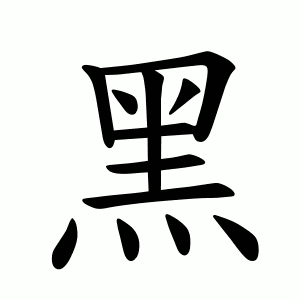黑
- black;
- dark;
It has many derived meanings, all of which originate from the basic idea of “black” or “dark”:
• To be black, to become black,
• Ignorant (figuratively: “in the dark” about something),
• Evil, wicked, malicious,
• To slander, to embezzle, to misappropriate,
• The color black,
• Evening, night,
• Secret, hidden, unseen, unlawful, illicit, etc.
Etymology
In oracle bone script, it depicted a person’s face smudged with soot.
In bronze script, additional dots were added on the face and body to emphasize soot stains and dark patches.
Usage in Korean
Additional notes
Unlike 玄, which refers to a dark, mixed, or mysterious color, 黑 specifically refers to a deep, pure black that absorbs light, like ink.
In Cantonese, it can also mean “beggar.”
Characters with 黑
20 strokes
Words that derived from 黑
黑
검을
흑
geomeul
heuk
Kangxi radical:203
Strokes:12
Unicode:U+9ED1
Cangjie input:
- 田土火 (WGF)
Composition:
- ⿱⿻ 土 ⿻ 丷 口 灬
